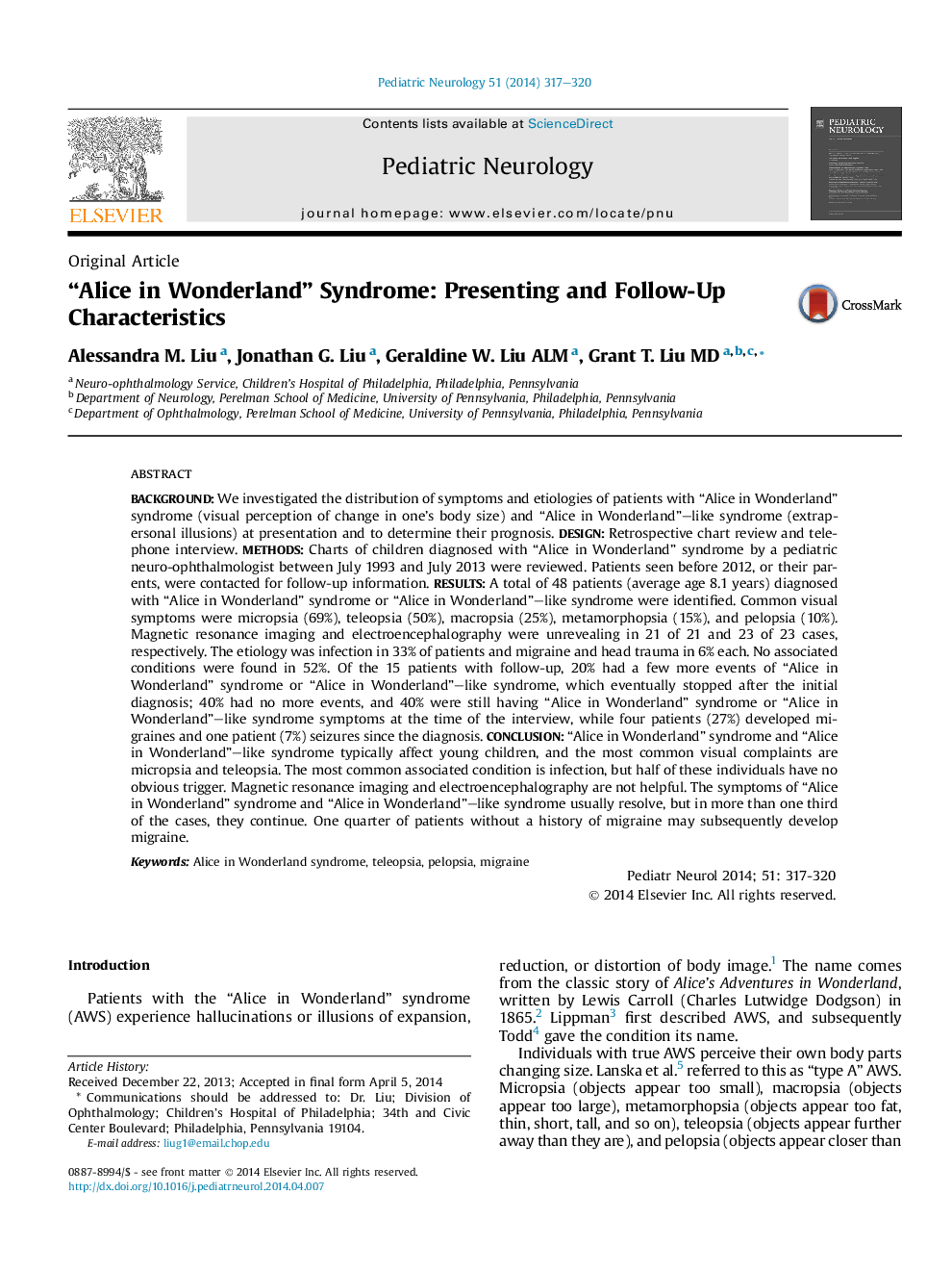| کد مقاله | کد نشریه | سال انتشار | مقاله انگلیسی | نسخه تمام متن |
|---|---|---|---|---|
| 3084615 | 1189775 | 2014 | 4 صفحه PDF | دانلود رایگان |

BackgroundWe investigated the distribution of symptoms and etiologies of patients with “Alice in Wonderland” syndrome (visual perception of change in one's body size) and “Alice in Wonderland”–like syndrome (extrapersonal illusions) at presentation and to determine their prognosis.DesignRetrospective chart review and telephone interview.MethodsCharts of children diagnosed with “Alice in Wonderland” syndrome by a pediatric neuro-ophthalmologist between July 1993 and July 2013 were reviewed. Patients seen before 2012, or their parents, were contacted for follow-up information.ResultsA total of 48 patients (average age 8.1 years) diagnosed with “Alice in Wonderland” syndrome or “Alice in Wonderland”–like syndrome were identified. Common visual symptoms were micropsia (69%), teleopsia (50%), macropsia (25%), metamorphopsia (15%), and pelopsia (10%). Magnetic resonance imaging and electroencephalography were unrevealing in 21 of 21 and 23 of 23 cases, respectively. The etiology was infection in 33% of patients and migraine and head trauma in 6% each. No associated conditions were found in 52%. Of the 15 patients with follow-up, 20% had a few more events of “Alice in Wonderland” syndrome or “Alice in Wonderland”–like syndrome, which eventually stopped after the initial diagnosis; 40% had no more events, and 40% were still having “Alice in Wonderland” syndrome or “Alice in Wonderland”–like syndrome symptoms at the time of the interview, while four patients (27%) developed migraines and one patient (7%) seizures since the diagnosis.Conclusion“Alice in Wonderland” syndrome and “Alice in Wonderland”–like syndrome typically affect young children, and the most common visual complaints are micropsia and teleopsia. The most common associated condition is infection, but half of these individuals have no obvious trigger. Magnetic resonance imaging and electroencephalography are not helpful. The symptoms of “Alice in Wonderland” syndrome and “Alice in Wonderland”–like syndrome usually resolve, but in more than one third of the cases, they continue. One quarter of patients without a history of migraine may subsequently develop migraine.
Journal: Pediatric Neurology - Volume 51, Issue 3, September 2014, Pages 317–320